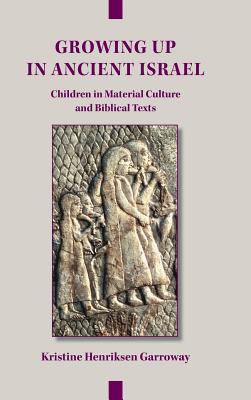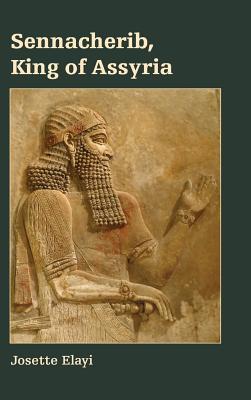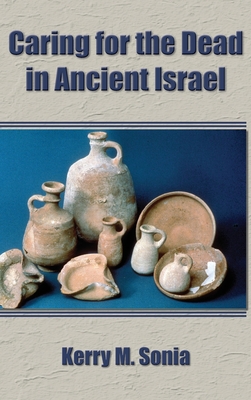


Archaeology and Biblical Studies
Series · 20
books · 1760-2020
Books in series

#4
Theology, History, and Archaeology in the Chronicler's Account of Hezekiah
1999
In a doctoral dissertation completed in 1995 (no institution noted), Vaughn takes the treatment of Hezekiah in 2 Chronicles 29-32 as an opportunity to test the relationship between extra-biblical historical data and an interpretation of Chronicles. He combines archaeological and epigraphic evidence with a focused reading of the verses to argue that traditions or remembrances that were historically accurate were used to construct the ideological message for the post-exile community.

#5
Daily Life in Biblical Times
2003
How did ancient Israelites live? What did they eat, and what affected their health? How did the family function? To answer these and similar questions, Borowski describes the natural setting and the people who occupied the land as well as the rural and urban economic activities in which ancient Israelites engaged, especially as they related to the family and social-political structure. The book addresses cultural, social, and religious activities as well as art, music, and the place of writing in Israelite society. Drawing on textual and archaeological evidence and written in nontechnical language, this will be a standard text for undergraduate Hebrew Bible courses and of particular interest to scholars, graduate students, pastors, rabbis, and nonspecialists.

#7
The Hittites and Their World
2007
Lost to history for millennia, the Hittites have regained their position among the great civilizations of the Late Bronze Age Near East, thanks to a century of archaeological discovery and philological investigation. The Hittites and Their World provides a concise, current, and engaging introduction to the history, society, and religion of this Anatolian empire, taking the reader from its beginnings in the period of the Assyrian Colonies in the nineteenth century B.C.E. to the eclipse of the Neo-Hittite cities at the end of the eighth century B.C.E. The numerous analogues with the biblical world featured throughout the volume together represent a comprehensive and up-to-date survey of the varied and significant contributions of Hittite studies to biblical interpretation.

#8
Between Text and Artifact
Integrating Archaeology in Biblical Studies Teaching
2003
Though researchers in both Biblical studies and archaeology have finally recognized the contributions they can make to each others' disciplines, the integration has been difficult to transfer to teaching, so that future scholars will not have to keep climbing over the same wall every generation. Teachers of history and religious studies share some

#9
Biblical Peoples and Ethnicity
An Archaeological Study of Egyptians, Canaanites, Philistines, and Early Israel, 1300-1100 B.C.E.
2005
Ancient Israel did not emerge within a vacuum but rather came to exist alongside various peoples, including Canaanites, Egyptians, and Philistines. Indeed, Israel's very proximity to these groups has made it difficult - until now - to distinguish the archaeological traces of early Israel and other contemporary groups. Through an analysis of the results from recent excavations in light of relevant historical and later biblical texts, this book proposes that it is possible to identify these peoples and trace culturally or ethnically defined boundaries in the archaeological record. Features of late second-millennium B.C.E. culture are critically examined in their historical and biblical contexts in order to define the complex social boundaries of the early Iron Age and reconstruct the diverse material world of these four peoples. Of particular value to scholars, archaeologists, and historians, this volume will also be a standard reference and resource for students and other readers interested in the emergence of early Israel.

#10
Who Were the Babylonians?
2004
Who was Hammurapi, and what role did his famous law code serve in ancient Babylonian society? Who was the mysterious Merodach-baladan, and why did the appearance of his emissaries in Jerusalem so upset Isaiah? Who was Nebuchadnezzar II, and why did he tear down the Solomonic temple and drag the people of God into exile? In short, who were the Babylonians? This engaging and informative introduction to the best of current scholarship on the Babylonians and their role in biblical history answers these and other significant questions. The Babylonians were important not only because of their many historical contacts with ancient Israel but because they and their predecessors, the Sumerians, established the philosophical and social infrastructure for most of Western Asia for nearly two millennia. Beginning and advanced students as well as biblical scholars and interested nonspecialists will read this introduction to the history and culture of the Babylonians with interest and profit.

#11
Writing and Literacy in the World of Ancient Israel
Epigraphic Evidence from the Iron Age
2010
Winner of the 2011 Frank Moore Cross Prize as the most substantial volume in the field of Northwest Semitic Epigraphy
Ancient Northwest Semitic inscriptions from Israel, Phoenicia, Syria, Moab, Ammon, Edom, and Philistia enlighten and sharpen our vision of the Old Testament world in various ways. Writing and Literacy in the World of Ancient Israel focuses on this epigraphic evidence in order to broaden our understanding of the techniques and roles of writing, education, and literacy during this biblical period. To that end, the volume systematically covers scribal education; scribal implements; writing media such as stones, potsherds, and plaster; and the religious, administrative, and personal uses of writing. Its “handbook” format makes it easily accessible, including for use as a textbook in courses addressing the cultural context of ancient Israel.

#13
A Political History of the Arameans
From Their Origins to the End of Their Polities
2016
K. Lawson Younger Jr. presents a political history of the Arameans from their earliest origins to the demise of their independent entities. The book investigates their tribal structures, the development of their polities, and their interactions with other groups in the ancient Near East. Younger utilizes all of the available sources to develop a comprehensive picture of this complex, yet highly important, people whose influence and presence spanned the Fertile Cresent.

#14
The Bible and the Dead Sea Scrolls
2005
The Dead Sea Scrolls have revolutionized our understanding of the literature of the Hebrew Bible, Second Temple Judaism, and the New Testament. The study of the Scrolls is now essential for understanding the history and transmission of the earliest biblical manuscripts, the development of apocalyptic and wisdom writings, and the rise of Jewish messianism—to name only a few of the most important areas of biblical literature to which the Scrolls have made an enduring contribution. As the importance of the Scrolls has increased over the past decades, the scholarly literature has increased exponentially. This brief yet thorough book highlights the most important contributions the Scrolls have made to the study of the Bible and charts new territory for future research into the Scrolls and the Qumran community. After reading The Bible and the Dead Sea Scrolls, students and scholars alike will have the basic understanding of the Scrolls necessary for pondering even deeper questions regarding the history, literature, and theology of the Bible.

#15
The Philistines and Other Sea Peoples in Text and Archaeology (Archaeology and Biblical Studies) (Society of Biblical Literature
2012
These essays, representing recent research in archaeology, bible, and history, reassess the origins, identity, material culture, and impact of the Philistines and other Sea Peoples on the Iron Age cultures and peoples of the eastern Mediterranean.

#16
Centrality Practiced
Jerusalem in the Religious Practice of Yehud and the Diaspora in the Persian Period
2006
At the end of the exile, the boundaries of sacred geography were open for YHWH could once again dwell in Jerusalem in a rebuilt temple, and temple centrality could be renewed. Yet how were such abstract theological and geographical commitments enacted? To what extent was the influence of the city felt and practiced in Yehud or far-away Egypt and Babylon? To answer such questions, this volume examines "centrality" through the practices of animal sacrifice, pilgrimage, tithing, and the use of incense and figurines. Unique in its appraisal of centrality via religious practice and in its integration of the biblical text and archaeological record, Knowles offers a compelling portrait of the variegated centralities of the Jerusalem temple in the Persian period.

#17
The Quest for the Historical Israel
Debating Archaeology and the History of Early Israel
2007
Engage the results of three decades of dialogue, discussion, and debate within Syro-Palestinian archaeology and ancient Israelite history
This book brings together for the first time an emerging “centrist” paradigm that the material cultural data, the biblical traditions, and the ancient Near Eastern written sources are all significantly relevant to the historical quest for Iron Age Israel. The historical essays presented here are based on invited lectures delivered in October of 2005 at the Sixth Biennial Colloquium of the International Institute for Secular Humanistic Judaism in Detroit, Michigan.
Features:
- Balanced approach to the question of the relevance of the biblical account for reconstructing early Israel’s history
- Organization by time period for easy comparison of Finkelstein and Mazar’s positions
- Introductory essays for each section give overviews of the archaeological theories

#18
Judah in the Neo-Babylonian Period
The Archaeology of Desolation
2012
Faust, Avraham

#19
New Inscriptions and Seals Relating to the Biblical World
2012

#20
Tel Dan in Its Northern Cultic Context
2013
This work presents in detail a description of archaeological data from the Iron II temple complex at Tel Dan in northern Israel. Davis analyzes the archaeological remains from the ninth and eighth centuries, paying close attention to how the temple functioned as sacred space. Correlating the archaeological data with biblical depictions of worship, especially the “textual strata” of 1 Kings 18 and the book of Amos, Davis argues that the temple was the site of “official” and family religion and that worship at the temple became increasingly centralized. Tel Dan's role in helping reconstruct ancient Israelite religion, especially distinctive religious traditions of the northern kingdom, is also considered.

#21
Phoenician Aniconism in Its Mediterranean and Ancient Near Eastern Contexts
1760
A close look at Phoenician religion The Hebrew Bible contains a prohibition against divine images (Exod 20:2-5a). Explanations for this command are legion, usually focusing on the unique status of Israel's deity within the context of the broader Near Eastern and Mediterranean worlds. Doak explores whether or not Israel was truly alone in its severe stance against idols. This book focuses on one particular aspect of this iconographic context in Israel's Iron Age that of the Phoenicians. The question of whether Phoenicians employed aniconic (as opposed to iconic) representational techniques has significance not only for the many poorly understood aspects of Phoenician religion generally, but also for the question of whether aniconism can be considered a broader trend among the Semitic populations of the ancient Near East.

#22
Sargon II, King of Assyria
2017
A critical resource that traces the reign of Sargon in context Josette Elayi's book is the only existing biography of Sargon II, the famous Assyrian king, who was a megalomaniac and a warlord. Elayi addresses such important questions, including what was his precise role in the disappearance of the kingdom of Israel; how did Sargon II succeed in enlarging the borders of the Assyrian Empire by several successful campaigns; how did he organize his empire (administration, trade, agriculture, libraries), and what was the so-called sin of Sargon?

#23
Growing Up in Ancient Israel
Children in Material Culture and Biblical Texts
2018
Growing Up in Ancient Israel uses a child-centered methodology to investigate the world of children in ancient Israel. Where sources from ancient Israel are lacking, the book turns to cross-cultural materials from the ancient Near East as well as archaeological, anthropological, and ethnographic sources. Acknowledging that childhood is both biologically determined and culturally constructed, the book explores conception, birth, infancy, dangers in childhood, the growing child, dress, play, and death. To bridge the gap between the ancient world and today's world, Kristine Henriksen Garroway introduces examples from contemporary society to illustrate how the Hebrew Bible compares with a Western understanding of children and childhood.

#24
Sennacherib, King of Assyria
2018
Josette Elayi's Sennacherib, King of Assyria is the only extant biography of Sargon II's infamous son. This critical resource for students and scholars traces the reign of Sennacherib in context in order to illuminate more fully the life and contributions of this warlord, builder, innovator, and social reformer—a unique figure among the Assyrian kings. Elayi offers both an evaluation of this royal figure and an assessment of the Assyrian Empire by interpreting the historical information surrounding the decisive events of his reign.

#27
Caring for the Dead in Ancient Israel
2020
In Caring for the Dead in Ancient Israel, Kerry M. Sonia examines the commemoration and care for the dead in ancient Israel against the broader cultural backdrop of West Asia. This cult of dead kin, often referred to as ancestor cult, comprised a range of ritual practices in which the living provided food and drink offerings, constructed commemorative monuments, invoked the names of the dead, and protected their remains. This ritual care negotiated the ongoing relationships between the living and the dead and, in so doing, helped construct social, political, and religious landscapes in relationship to the past. Sonia explores the nature of this cult of dead kin in ancient Israel, focusing on its role within the family and household as well as its relationship to Israel's national deity and the Jerusalem temple.
Authors
Josette Elayi
Author · 3 books
Josette Elayi-Escaich is a French antiquity historian, Phoenician and Near-Eastern history specialist, and honorary scholar at the French National Center for Scientific Research. Elayi authored numerous archaeology and history works, and literary novels.

Israel Finkelstein
Author · 5 books
Israel Finkelstein is a professor of archaeology at Tel Aviv University. He is a leading figure in the archaeology of the Levant and the laureate of the 2005 Dan David Prize in the Past Dimension—Archaeology. Finkelstein served for many years as the Director of the Institute of Archaeology at Tel Aviv University and is the co-Director of the Megiddo Expedition. He is the co-author, with Neil Silberman, of The Bible Unearthed (Free Press, 2001) and the author of many field reports and scholarly articles.

Bill T. Arnold
Author · 10 books
Bill T. Arnold (PhD, Hebrew Union College) is Paul S. Amos Professor of Old Testament Interpretation at Asbury Theological Seminary in Wilmore, Kentucky. He is the author or editor of numerous books, including Encountering the Book of Genesis, Dictionary of the Old Testament: Historical Books, A Guide to Biblical Hebrew Syntax, and a commentary on 1 and 2 Samuel. He is also the coauthor (with Bryan E. Beyer) of Encountering the Old Testament.

C.D. Elledge
Author · 1 book
Casey Elledge is Associate Professor in Religion at Gustavus Adolphus College in Saint Peter, Minnesota.
Ann E. Killebrew
Author · 2 books
Ann E. Killebrew is an Associate Professor in the Department of Classics and Ancient Mediterranean Studies and Jewish Studies program at the Pennsylvania State University. She has directed or participated in dozens of excavations in Israel, Turkey, and Egypt during the past thirty-five years. Currently she co-directs the Tel Akko Total Archaeology Project in Israel. She is author of numerous publications relating to archaeology of the Levant, including the award-winning book, Biblical Peoples and Ethnicity: An Archaeological Study of Egyptians, Canaanite, Philistines, and Early Israel 1300-1100 B.C.E. (2005).